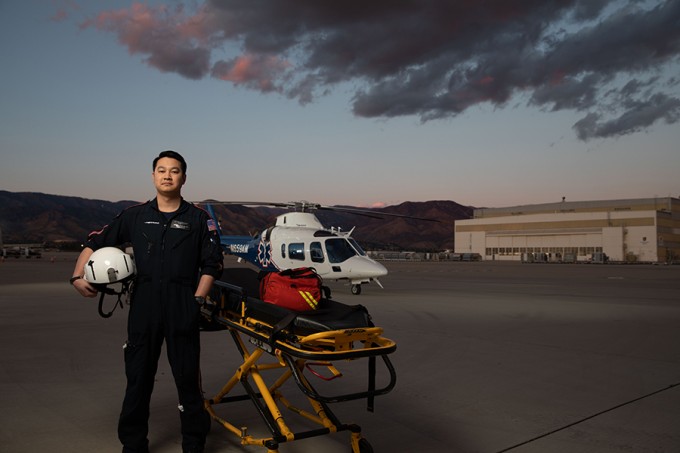My Specialty
Faculty/Flight Nurse, Andrew Tran, West Coast University
Using innovative technology to educate students during COVID-19

Andrew Tran, RN, FNP-C
Flight Nurse and Alumni/Faculty
West Coast University Nursing Department, Ontario
What has your nursing career trajectory been like?
I entered nursing as an LVN working in ED, med-surg and telemetry. Once I finished the LVN-to-BSN program at West Coast University, I knew what I wanted. After submitting online applications, I drove around to the hospitals where I knew I wanted to work and actually walked my resume into the office of the nursing director or hiring manager, wearing a suit and tie. That’s how I found my next position in a six-bed ED and worked my way up to a Level I trauma center.
Over these past few years, I’ve also earned a master’s in nursing as a family nurse practitioner (FNP-C). Throughout the time I’ve been teaching at West Coast, I’ve also been working weekends as a critical care flight nurse, transporting patients in a helicopter. My education as a nurse practitioner is a great help in my flight position, especially in terms of advanced pharmacology and assessment skills.
Please tell us about your work at West Coast University.
I’m what we consider alumni faculty because I actually received my BSN from West Coast University in 2013 and am currently an adjunct faculty member there. West Coast was great to me and I wanted to pay it forward.
I have served as lead instructor of the advanced medical-surgical nursing (critical care) course. As part of that position, I also managed 15 clinical and theory instructors, lectured in the classroom and taught students in the clinical setting.
With faculty members like me who are still working as clinicians, we have the opportunity to bring real-life patient scenarios into students’ educational experience rather than just lecturing on disease processes and medications. I’m seeing how clinical learning and theory can be blended together as a more unified whole.
How has nursing education adapted during the pandemic?
We’ve had to get much more creative in our approach in order to give students the same high-quality education, even without as much face-to-face clinical time. For instance, we do skills validation via Zoom, with the students demonstrating the use of their equipment. Our simulation team is doing amazing work.



